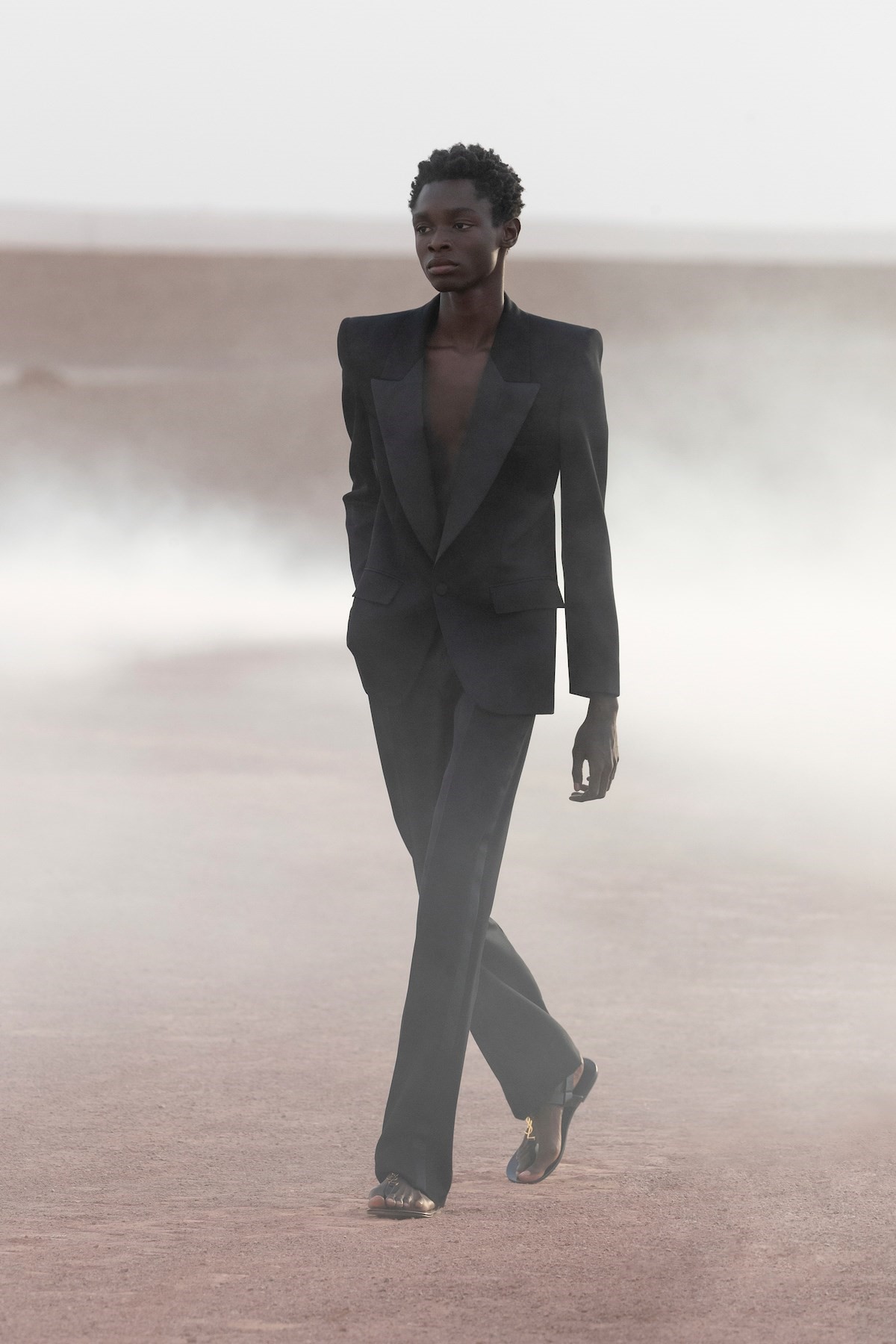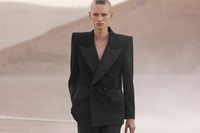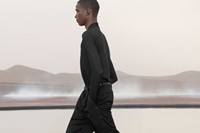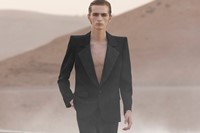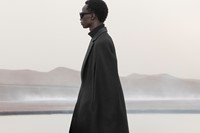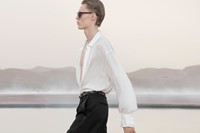It was undeniably spectacular: in the Agafay desert at the base of the Atlas mountains just outside Marrakech, Saint Laurent defied nature and erected its own oasis, a watering-pool in a circle of light. A dust storm had, moments before, blustered through the city, making the air haze a pinkish beige that leaked out into the desert, filtering the light and making it all look a bit like a mirage. And into that already unreal terrain walked a sharp black silhouette, incongruous, a Le Smoking tuxedo tailored for the evening, kicking up sand as it strode. It was the shoulders that grabbed you – which, considering the vista of sand dunes panning out behind, is an achievement unto itself, never mind the workmanship in their realisation. The line was strong, assertive, confident.
Those three words summarise this Saint Laurent menswear collection, the fourth that creative director Anthony Vaccarello has presented stand-alone in environs across the world engineered to wow. With any fashion house, that strategy can always cause a tussle between context and clothes, a jostle for attention – where to look first? Vaccarello was canny: rather than creating clothes inspired by Morocco, he almost reacted against it. “I didn’t want to do a collection based on cliché,” he said beforehand. He didn’t. Instead, he created his best menswear collection to date.
But there was an oblique link to Morocco, in the meaning of the lexicon of Saint Laurent. For the house’s founder, Marrakech meant escape to pure creativity, from his very first trip in 1966. Prior to each of his biannual haute couture collections, he would retire to his house in Marrakech – he owned two different ones during his life, Dar el-Hanch (the House of the Serpent) and Dar Es Saada (the House of Happiness in Serenity) – and executed hundreds of sketches in a frenzy, which would then be edited to form each collection’s heart and soul. It wasn’t that those collections were inspired by Marrakech in terms of style, but rather that their genesis came about from the freedom he felt in that place, more than any others. It was in Marrakech that he devised his greatest triumphs: his Ballets Russes collection, his homages to Picasso, Braque and Van Gogh, and his controversial 1971 collection – which he called Liberation.
Vaccarello’s homage to Saint Laurent and Marrakech reflected the same ethos. As with Saint Laurent, there were a few echoes, a few loosely-sketched lines that evoked the place – the djellaba, the long, loosely-fitting men’s robe worn in North Africa, inspired elongated cardigans and billowing shirts and capes, just as they influenced Yves Saint Laurent to include similar garments in his own collections. But the freeing of creativity here also inspired Vaccarello to simply do what he felt was right. “I wanted it to be a continuity of the woman of the last show,” he said. “I was wondering, with masculine clothes, at what point do we say that piece is feminine?”
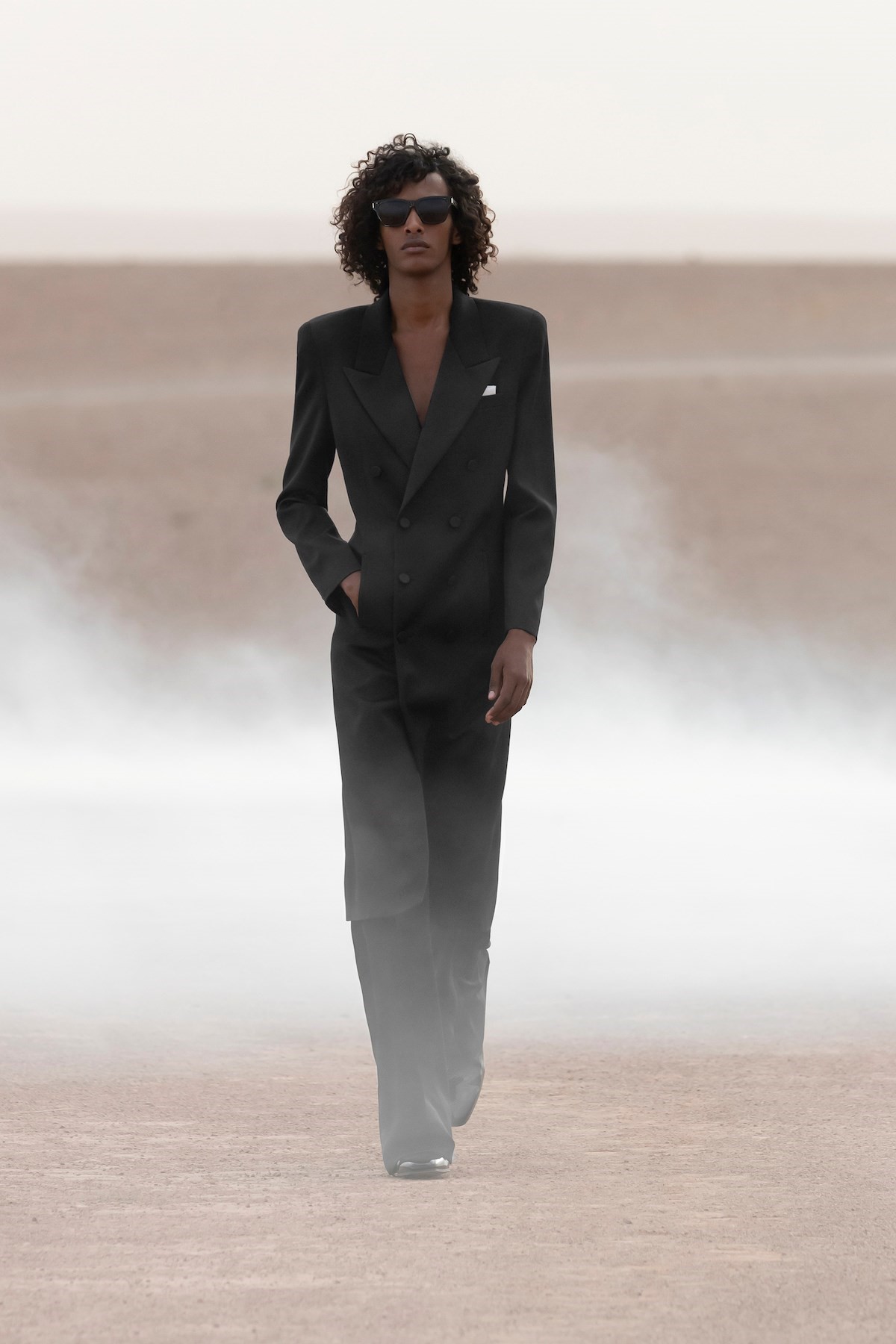
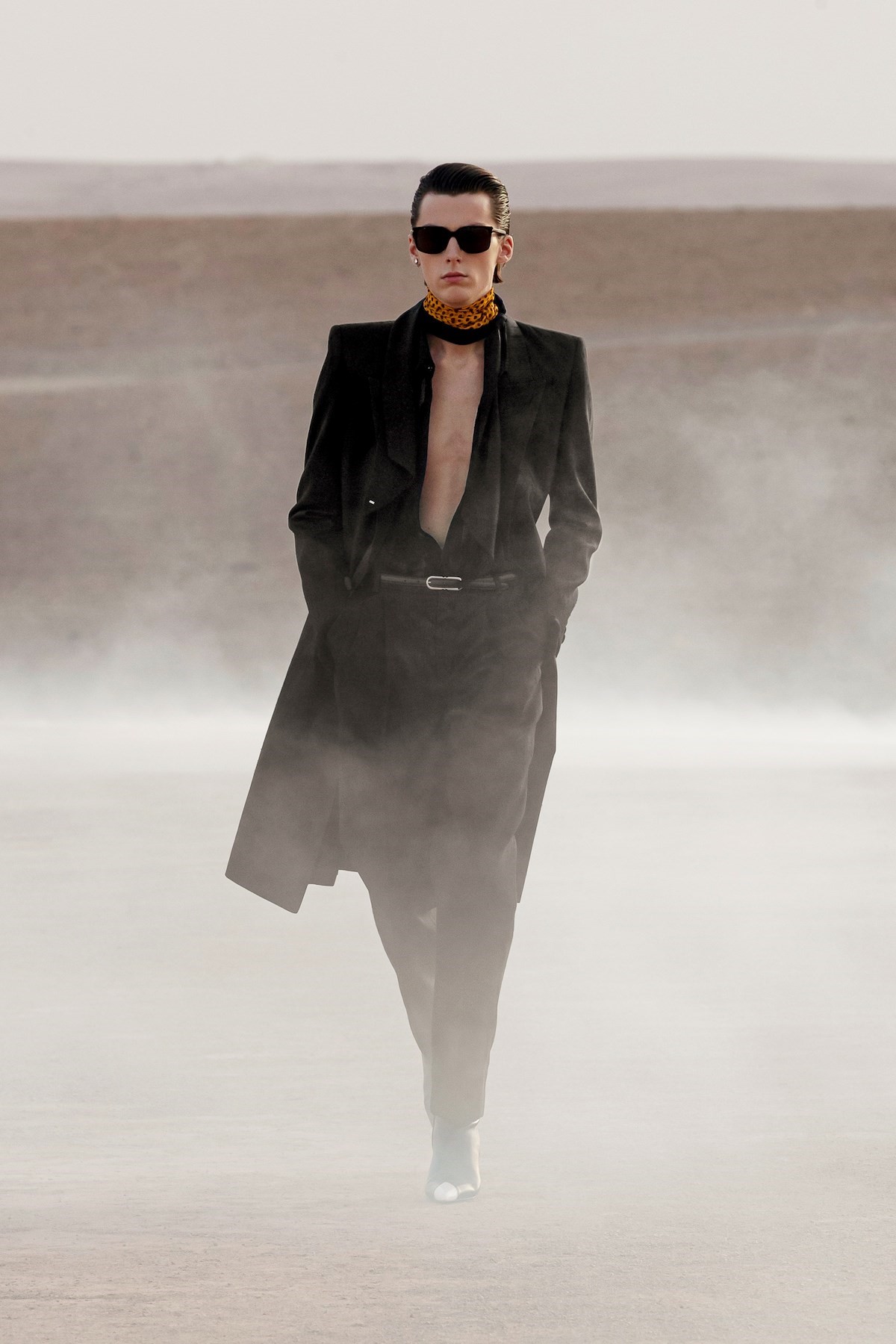
And given that Saint Laurent has a history of slip-streaming between mens and women’s, that felt entirely in key with house style. A couple of coats – a sublimely-tailored overcoat and a distinctly Saint Laurent-ean pea-coat – were plucked directly from that womenswear show, while languid satin trousers seemed a masculine reflection of the long bias-cut evening gowns worn beneath. They all hung underneath that swaggering, wide shoulder that has been a hallmark of Saint Laurent since the 1970s – and it was perfectly pitched here. More than material similarities, however, what was striking was the mood of refinement, of seduction, a persuasive image of a manner of dressing simultaneously new and yet old, in its echoes of the sophistication and élan of, say, the 1930s or the 1970s. It packed a powerful punch, making a salient case for the revival of tuxedo dressing, a highly-polished shoe, a loosely-buttoned shirt, pomaded hair … in short, an embracing of elegance, a return of grace. It made me mildly ashamed of my scuffed trainers and grubby T-shirt. And rightly so.
But this was also an innately personal collection. “It’s how I dressed in 2000 – it’s a boy I loved back then,” said Vaccarello. Maybe he meant a literal boy, or maybe an idea – an image, an avatar of elegance of that youthful period of this century, when he himself was only just 18. “I wanted to recreate that spirit.”
Saint Laurent’s history is more than just Yves. When Vaccarello harked back to the 2000s, there was a wry nod to Tom Ford, whose work Vaccarello admires. A relaxed white tuxedo, slithering over a bare chest with a black clutch-bag, was an ode to Saint Laurent’s “female double” Betty Catroux – she also inspired Ford’s Spring 2001 debut for the house, which opened with a white trouser-suit slithering over a bare chest, albeit on a female model. I hope Vaccarello doesn’t mind me pointing that out – because it is about more than a 21-year old look ripe for revival. It indicates a designer entirely at ease with a legacy he is not only upholding, but helping to forge himself, one heartily hurrahing and celebrating past excellence because he realises the excellence of what he himself is executing.
